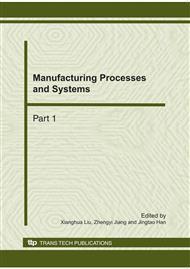p.845
p.849
p.854
p.859
p.865
p.869
p.873
p.877
p.882
Removal of Heavy Metal Ions from Water Using Porous Nano-Barium-Stroutium Titanate as an Adsorbent
Abstract:
The ability of porous nano-barium-stroutium titanate (PBST) to remove heavy metal (lead, nickel and zinc) ions by sorption from aqueous solution was assessed. The effects of process parameters such as pH, contacttime, regeneration conditions and the effects of common coexisting ions on heavy metal (lead, nickel and zinc) ions uptake were investigated. The results showed that the lead, nickel and zinc ions studied could be quantitatively retained at a pH value range of 5~8. The adsorption capacities of PBST for lead, nickel and zinc were found to be11 6.5mg•g-1, 4.8mg•g-1 and 8.3 mg•g-1, respectively. Desorption studies were carried out successfully with diluted HNO3 solutions. The results indicate that PBST can be used as an effective adsorbent for the treatment of wastewaters contaminated with lead, nickel and zinc ions.
Info:
Periodical:
Pages:
865-868
Citation:
Online since:
October 2010
Authors:
Price:
Сopyright:
© 2011 Trans Tech Publications Ltd. All Rights Reserved
Share:
Citation:


